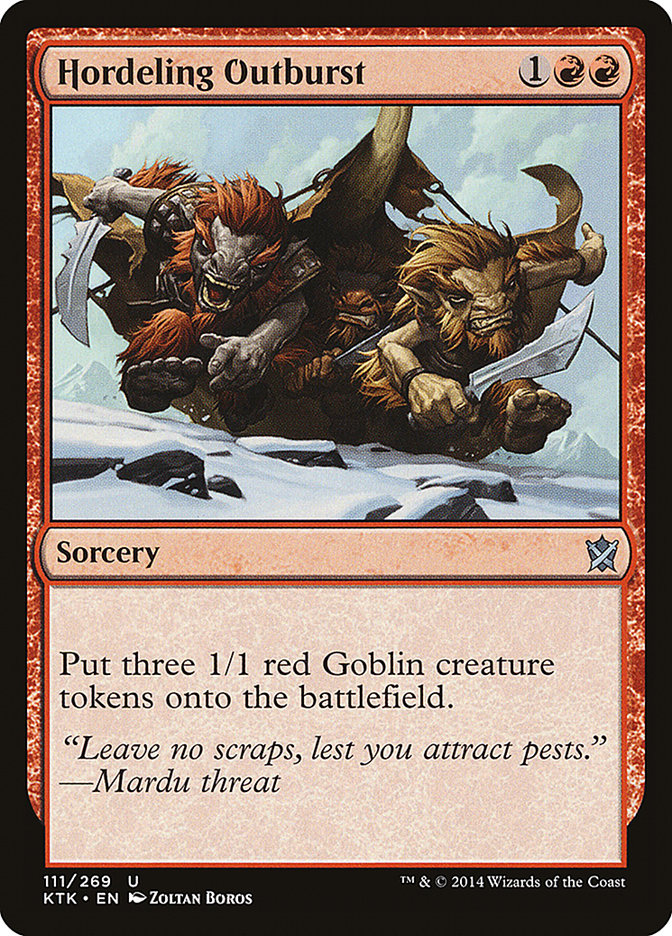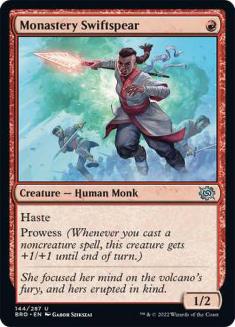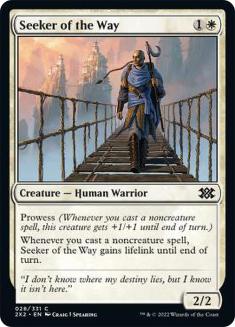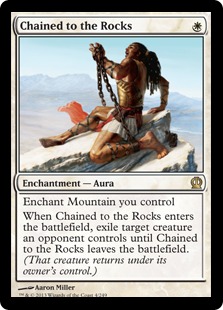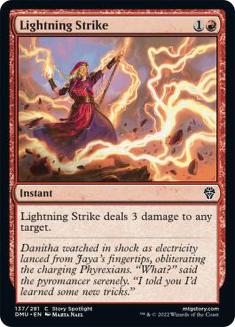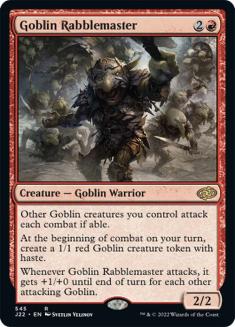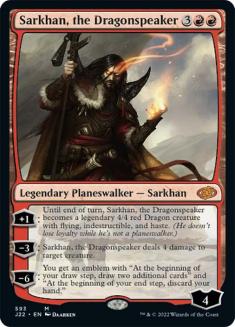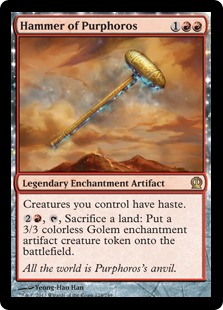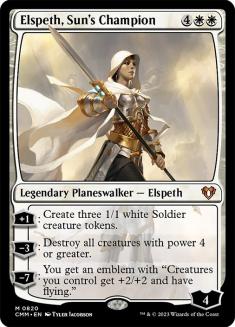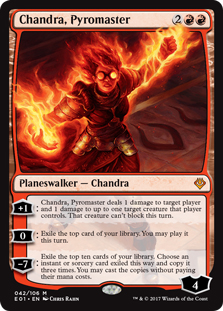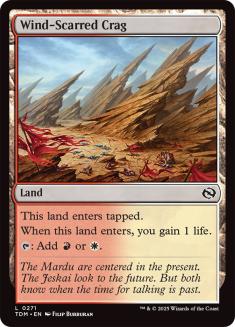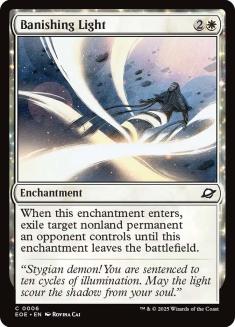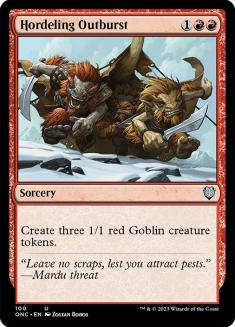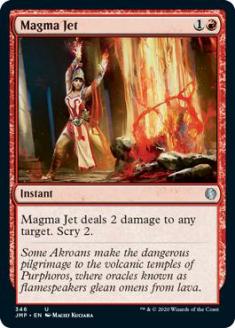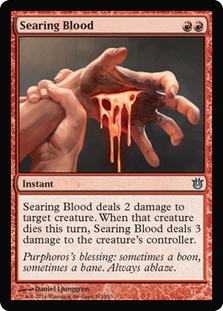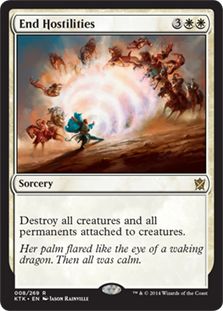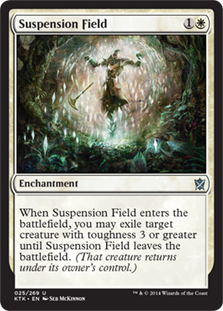Pro Tour Khans of Tarkir is in the books and Wizards got exactly what they wanted: clans clashing against one another in the battle for superiority. Also
for $40,000. Most of the competitors picked up their favorite three color wedge and went to battle, but some of us poor souls decided that only one or two
colors were needed to fend off the triple-colored tribes. It wasn’t much of a surprise to see Abzan against Jeskai in the finals showcasing the powerful
three-colored spells that put them there. Were these decks in that position simply because they’re superior, or was it the fact that the other decks were
built poorly? Personally I like to think it’s the latter, but that’s due to the fact that I forged a sweet one to take to the battlefield.
Was it cute?
Of course!
Was it good?
Probably.
Most importantly, was it fun?
Heck yes!
This deck was the most fun I have ever had playing in a Pro Tour solely because half the time my opponents had no clue what was going on! Before I get
ahead of myself, I guess we can take a stroll down memory lane on how the deck first came together.
My journey began as I boarded a flight to sunny Honolulu. Now most would think using the phrase “sunny Honolulu” would mean that I was happy to be going to
a tropical island. It would make sense with my new love for Infect in Legacy.
But no. I hate islands!
I hate islands so much that the movie Cast Away still gives me nightmares. All I do on these tiny bodies of land is sweat, drink water, and dream to once
again live in the glacially cold paradise that is North Dakota.
That said, I was excited to be reunited with Team Revolution and the team’s newest recruits, Dennis Rachid and Patrick Dickman. Dennis is someone I wasn’t
familiar with, but Patrick and I have become friends ever since I took an interest in his innovative TarmoTwin deck he built in Modern. I couldn’t wait to
get to work on breaking Standard once again. Goblin Rabblemaster has rarely stayed in stock since the Pro Tour where we were the only team to be playing
it, and I was hoping to duplicate those results. Odds were it would have to be with another card though since people figured out how to beat Rabblemaster.
Testing started out exactly as it did last time: with most of us picking up an archetype we liked while a few kind souls started putting together the stock
decks of the format. No one wants to actually be the Green Devotion player in testing, but Timothee Simonot is a true teammate and “happily” counted
Nykthos mana for the entirety of our testing.
Per usual, I tried Sylvan Caryatid strategies long enough to realize I still disliked them. I don’t know what it is about me and ramp strategies as of
late, but I just can’t get behind them. They are obviously powerful on the play, but I found too many games going into the later turns and drawing such a
high density of irrelevant cards was unacceptable. The cards that surrounded Sylvan Caryatid were, of course, extremely powerful, but I just couldn’t get
behind playing Sylvan Caryatid when there were so many other things to explore.
The first (and eventually last) place I started was with a Mono-Red Aggro deck. This wasn’t your ordinary list though. The only one drops I liked in the
format were Monastery Swiftspear and Foundry Street Denizen. The others needed too many gimmicky things to be powerful but wouldn’t even come to fruition
since Lightning Strike and Magma Jet seemed to be great removal in the format. This is when I finally tried my “favorite” card in the format:
I don’t know what it was about the card, but I just liked it. Spectral Procession was one of the most defining cards in its time, and this was only
slightly worse. Stoke the Flames gave these little creatures something to do when they couldn’t attack and would undoubtedly lead to some huge swings in
tempo. This is the list I put together:
Creatures (15)
Lands (22)
Spells (23)

I played around with the deck for a short time until I put it against what I thought would be the first test: Jeskai Aggro. The first game that I was on
the play looked to be going normal. I played a one drop and cast Magma Jet on the second turn. I then saw exactly what I wanted to be doing at the Pro
Tour. My opponent, afraid of Goblin Rabblemaster, held up his two mana instead of playing Seeker of the Way. He would just wait until I cast the Master of
Rabble, kill it, and then move on with his life. “This seems like a perfect time to cast Hordeling Outburst!” I said to myself and slammed the card on the
table like I just won the World Series of Poker on a bluff. “Seems good,” my first opponent said. Then the second. And then finally all of them. Pretty
much everyone showed respect to the Hordeling Outburst.
The deck on the other hand was a little rough. It had all the same problems red decks have always had but in a much harsher metagame. Polukranos, World
Eater and Siege Rhino were going to be tough creatures to beat without adding a second color. I decided a splash for white was needed.
Time went on as I tested the deck and two things became apparent: the deck couldn’t lose to Jeskai Aggro, but it also couldn’t beat Abzan Midrange or G/B
Devotion. I tried numerous sideboard strategies yet none of them seemed to consistently work. That was until Patrick Dickman suggested I try the old German
R/W Burn technology of playing Elspeth, Sun’s Champion in the board.
You could imagine how perplexed I was to hear that burn decks boarded in a six mana planeswalker in the mirror match, but I guess the games revolved around
attrition wars since both players had access to four Nyx-Fleece Rams. It kind of made sense once he spelled it out for me. My mind raced at all the
possibilities, and I ended up wanting to test the old transformational sideboard.
Not many teammates were on board with such a gimmicky idea for a Pro Tour so I decided that the only way to convince them (once it was good, of course) was
to find a way that the power of the sideboard was good enough, that even if our opponents knew what was going on, that they still wouldn’t be favored. I
clawed and scrapped for ideas while testing as much as I could, yet I was gaining no ground. I just couldn’t get the sideboard right for the green
matchups.
I decided to quit.
Jeremy Dezani was working on a Mardu Control deck featuring four copies of Chandra, Pyromaster. This was a card I was most excited about playing with due
to our internal testing so I decided to give up the dream and move onto a team deck.
“What are you doing?” I hear while my nose is submerged in numerous boxes of cards looking for everything I have for Mardu Control. “Building the Mardu
deck,” I answer before looking up. To my surprise, it was Dennis Rachid staring at me from the door looking at me as if I were a wounded animal. He knew he
wanted to play the R/W deck I was working on, just not the version I was currently on. You see, I got to a point that I was testing Deflecting
Palm in the maindeck over Seeker of the Way. I set a rule (trap) for myself that if I ever started going back to old lists I already discarded, that my
testing had become cyclical, and I needed to give up on the deck due to time restraints.
Dennis’s opinion was completely the opposite.
He thought the deck was great, but that I was going too far down the rabbit hole and needed to just go back to a time where the deck was winning. A lot! We
did just that and all the pieces fell together. We ended up sleeving up this beauty:
Creatures (11)
Planeswalkers (2)
Lands (23)
Spells (24)

The idea was simple. Be the aggressive “burn” deck in game 1 and board into a midrange or control deck when needed. Once players knew what the deck could
do, out job was to board into the fourth configuration which was mostly just all of our proactive cards.
This was because most players will try to have too many answers when they are faced with an unfamiliar opponent. Instead of embracing the aggression of
Magic and simply trying to kill the opponent before they do their thing, players need to feel in control even when it’s rarely found.
This fourth way to board won me almost every game during the tournament and that is exactly why. My opponents had very few ways to actually kill me, but
they rarely drew the correct answers for my threats. Their decks were littered with Drown in Sorrows alongside Utter Ends which did not play well when I
drew too many planeswalkers for them to deal with. Now they didn’t know I would have very few answers for their threats, but I sure did know they would
have too many situational removal spells for my wide variety of threats.
My favorite moment from the tournament was in the first round of Constructed. Obviously this was going to be the “easiest” round for our transformational
sideboard, but I never dreamed it was be such an amazing story.
I sat down against Martin Juza who is a good friend of mine. We exchanged pleasantries while shuffling. “That was a fast keep,” Martin said after I said
kept before I even knew what my seventh card was. It didn’t matter because this was my other six.
The last card?
Martin, on the other hand, had to mulligan not once, but twice. He showed me back to back Fleecemane Lions before I quickly showed him to his sideboard.
Game 2 played very similar to game one but with a minor twist.
I didn’t play any creatures.
Suspension Field, into Banishing Light, into Stoke the Flames started the game before I eventually started the planeswalker train. Martin tried to put up a
fight, but Bile Blights and Drown and Sorrows cluttered his hand. Eventually I Ended the Hostilities before slamming Elspeth, Sun’s Champion onto the
table. Martin shook my hand like the good sport he is, but I could tell that he couldn’t believe what happened. I signed the slip and immediately went on
the hunt to find my other teammates.
Around the corner was Dennis Rachid playing against Sam Black. “I guess the jig is going to be up much sooner than I wanted it to be,” I said to myself as
I got close enough to see what was unfolding: Elspeth, Sun’s Champion and her minions protecting Chandra, Pyromaster. Both planeswalkers were almost at
ultimate while Dennis has three cards in hand. But what was on Sam’s side of the board?
Two Hornet’s Nests, a flush line of forests, and zero cards in hand.
Game. Set. Match. I think we found a gameplan boys!
Seriously, who doesn’t want to play this deck after seeing this sweet board position? I mean, check out that graveyard!
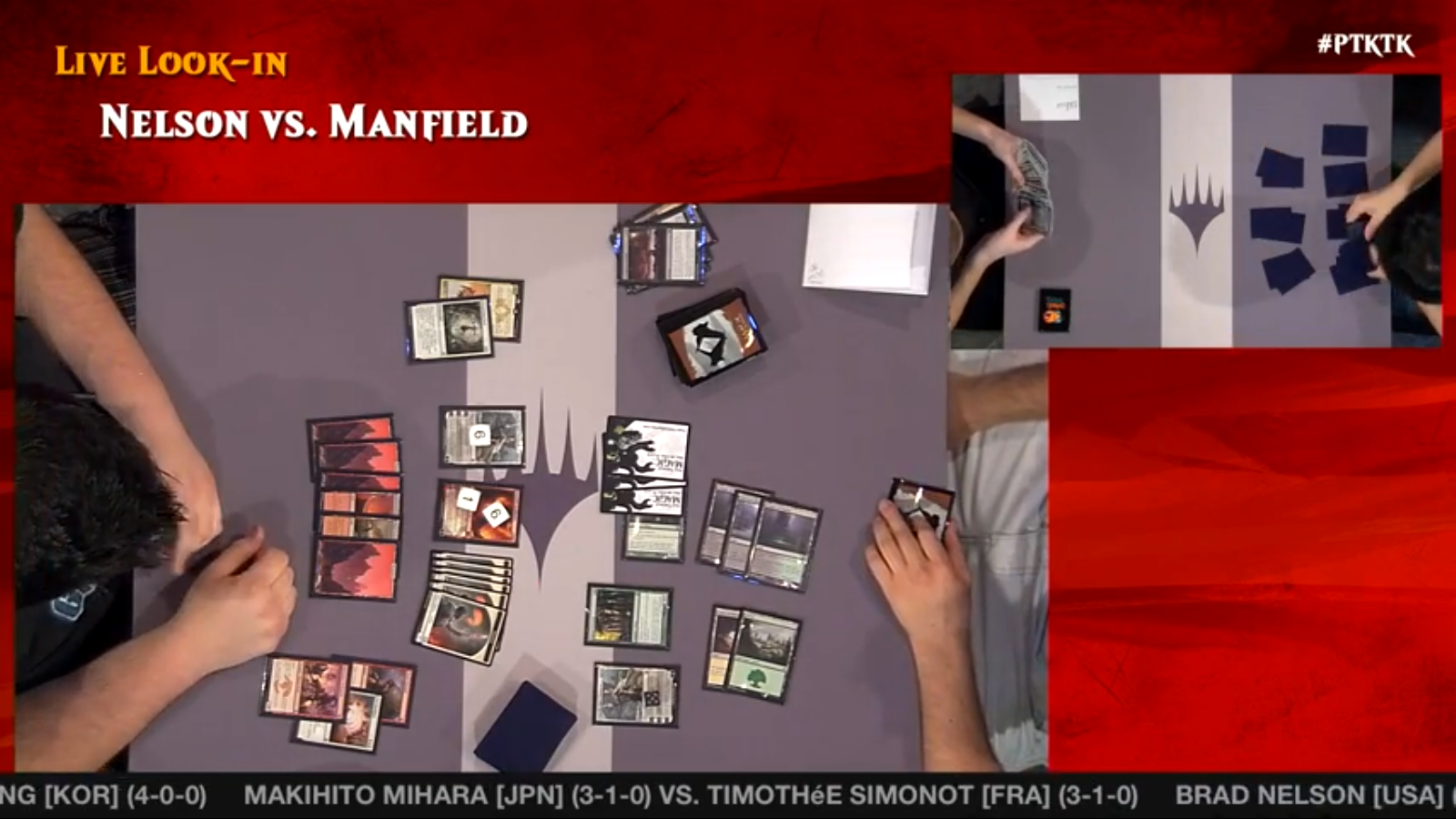
All kidding aside, this R/W deck is a great choice for any tournament that is being represented by Abzan Aggro/Midrange, Jeskai Tempo, and G/B Devotion. It
has the ability to win early or long, depending on how you choose to sideboard the deck. Your opponents won’t know exactly what your gameplan is and often
times will not be correctly sideboarded for your configuration.
VS Jeskai Tempo
This is the matchup that the deck was designed to beat. Hordeling Outburst is phenomenal in this matchup and is easily your best card. Not only does it
come down and often times two-for-one your opponent, but it is also the tempo boost needed on turn 4 when an opponent has a creature already in play.
Simply casting Hordeling Outburst allows you to not lose any “mana” when casting Stoke the Flames to deal with Brimaz, King of Oreskos or Mantis Rider.
Sideboarding is rather easy in this matchup:
Out (on the play):
In (on the play):
Out (on the draw):
In (on the draw):
The games can often times come down to attrition battles. The most important thing about the matchup is to quickly identify how the game will play out and
find the way to make sure it ends in your favor. Often times that will revolve around Hordeling Outburst winning the game, but it is also worth noting that
playing any creature into open mana is often worse than just holding them. The matchup is riddled with short bursts of tempo advantage when one player taps
out for a threat that is immediately dealt with. This opens the door for the opposing player to play something like Goblin Rabblemaster and get a free
token. Don’t undervalue these little 1/1s in a matchup littered with small creatures and one-for-one removal spells. A little goblin can set in motion the
win, so be wary of opponents getting to trigger the Rabblemaster even once.
VS Abzan Midrange
Game 1 is all about the race and who wins the die roll. Try to get on the board as quickly as possible and find some way to win the game quickly. Abzan
Midrange has very slow removal in game 1. This means it is often ill-advised to attack with a Goblin Rabblemaster into open mana as it is extremely likely
that Abzan Charm is simply rotting in their hand.
Sideboarding is dependent on how you think your opponent will sideboard. They have the option to try to kill all of your creatures or try to attack the
planeswalkers. I suggest being a mix of the two decks.
The worst cards in the matchup on the draw are Monastery Swiftspear and Hordeling Outburst. These should be replaced with creature removal spells and
Elspeths. The burn is also not that great in the matchup on the draw so I would suggest sideboarding in this way.
Out (on the draw):
In (on the draw):
On the play I like to bring in the Hammer of Purphoros and trim on the control cards.
Out (on the play):
In (on the play):
This sideboarding strategy allows the deck to take advantage of being on the play and can quickly finish the game off when they expected it to be all about
the planeswalkers.
Truth be told, this archetype can live on throughout the format as long as you are innovating. This 75 is going to be bad for next week since people know
what’s going on now. You have to make changes yourself so that you can be one step ahead of your opponents. I can’t sit here and show you the best version
of this R/W deck since your opponents will also have that information. Abzan Midrange and Jeskai Aggro both have extremely powerful spells, but they lack
flexibility. R/W strategies have that in spades. You just need to find the cards you like the most and try to incorporate them into a working strategy.
Sure, this version of R/W has the raw power to win you Friday Night Magic, or a PreTQ, but I have never once been so sure in my life that this deck will
have to be built by you. Be creative! Find the sideboard strategies that you love the most. Make them regret the fact that they hedged against this version
of R/W during sideboarding and you brought your very own sideboard to the fight. Just find what you like and execute it.
The best piece of advice I can give you going into new Standard is to not hedge. Standard is becoming one big race to the finishing line and decks that
sideboard “a little bit of this and a little bit of that” will always be worse than those who know their gameplan and have the cards to execute it. Be
confident in your decisions, and don’t change lines too often. Embrace the aggression!

